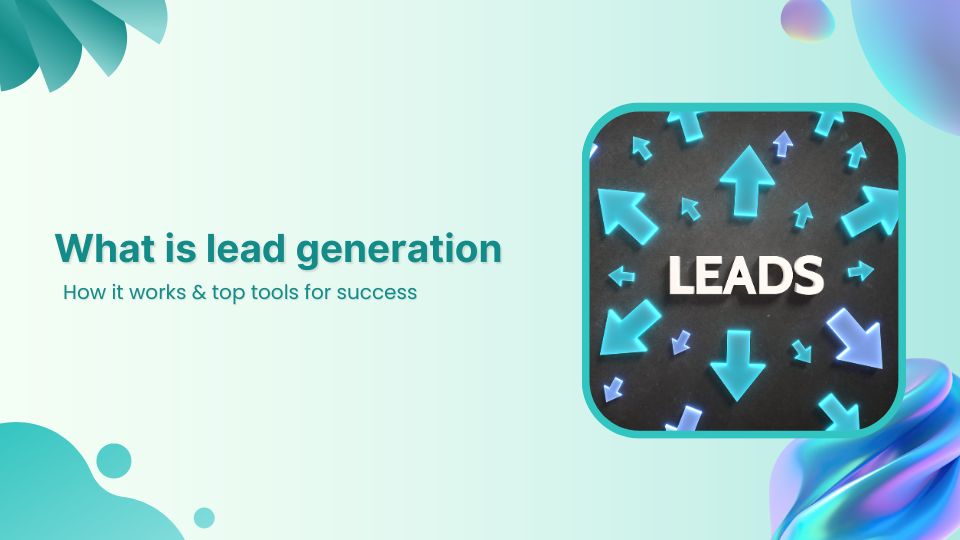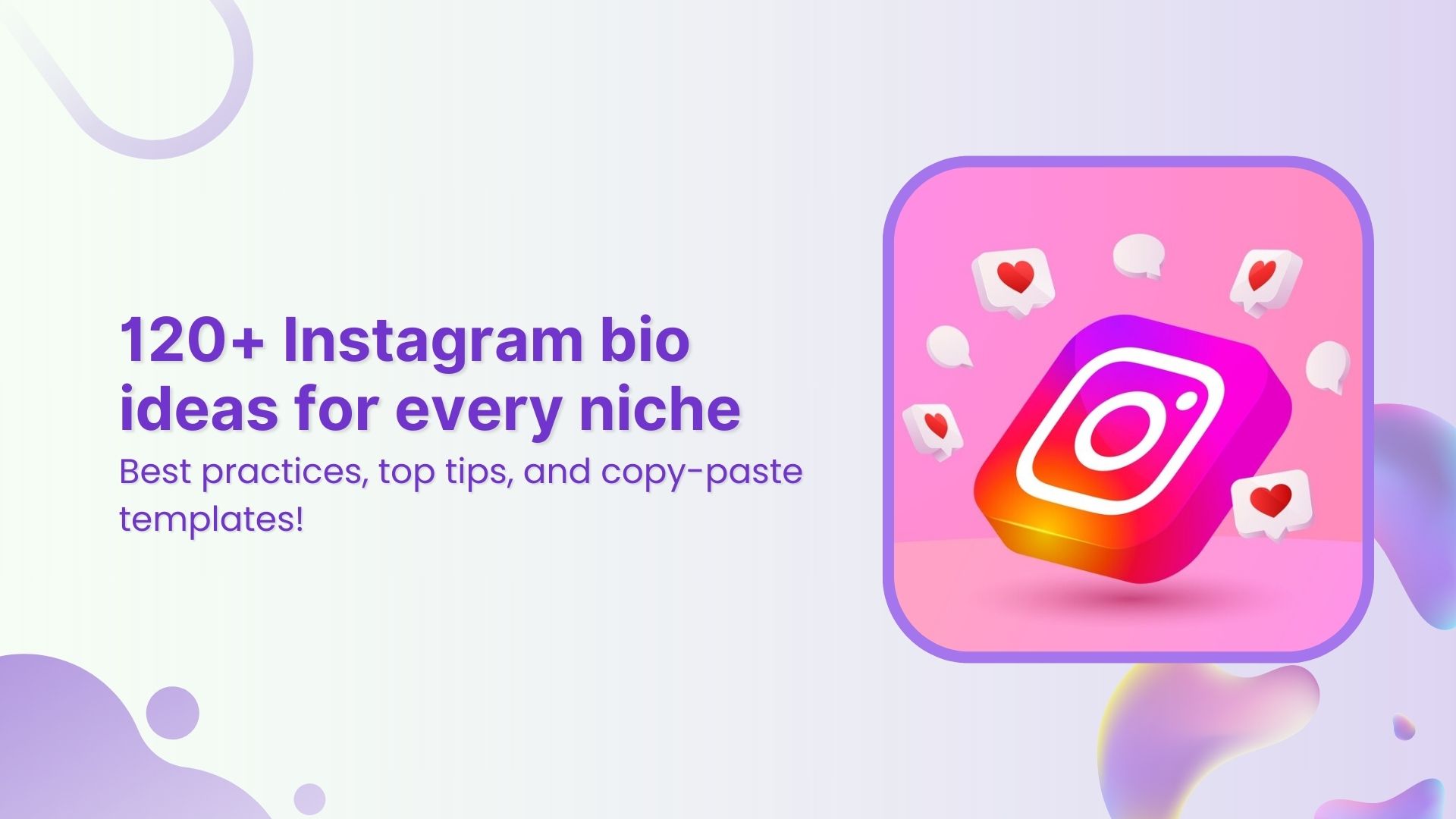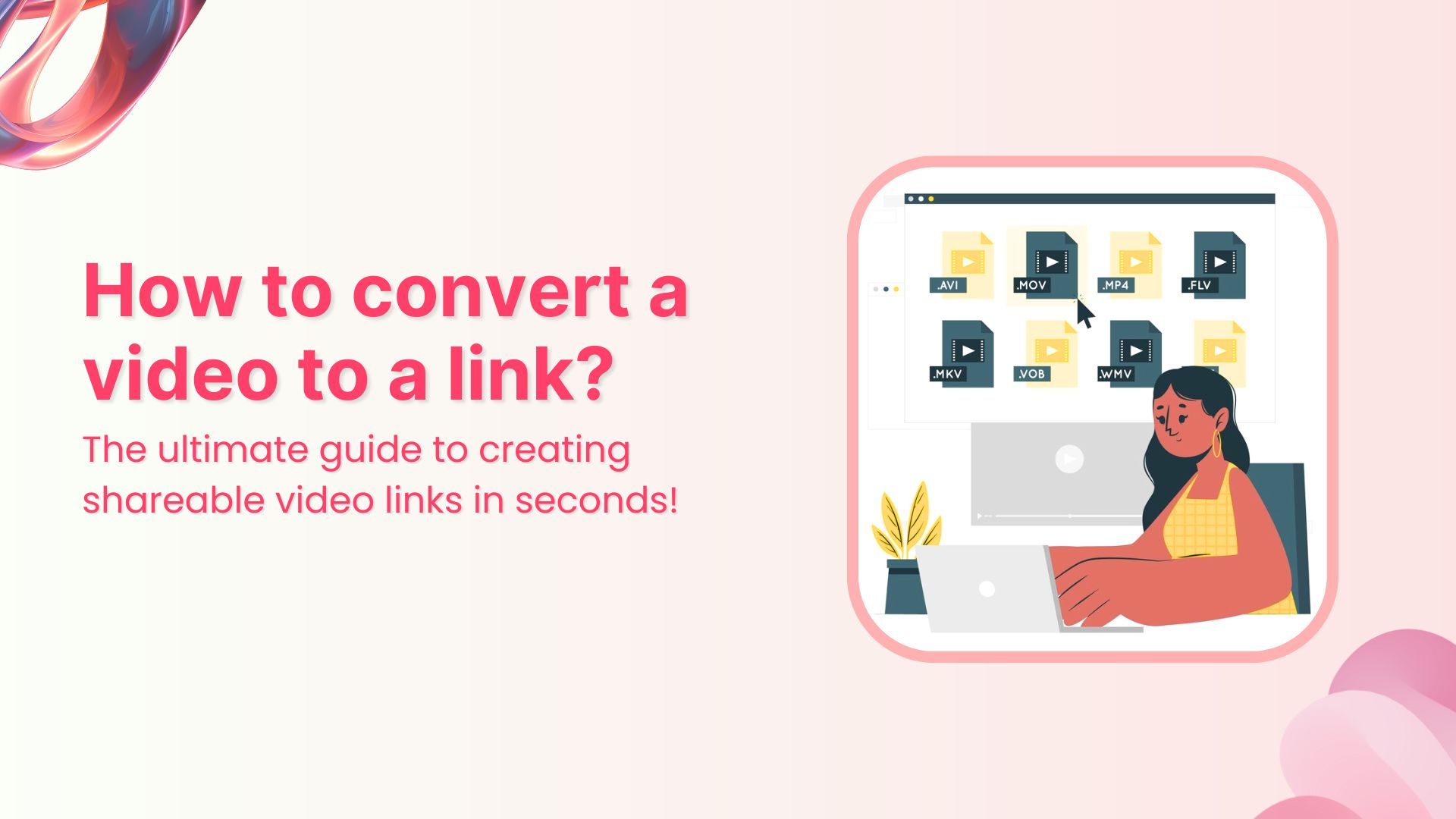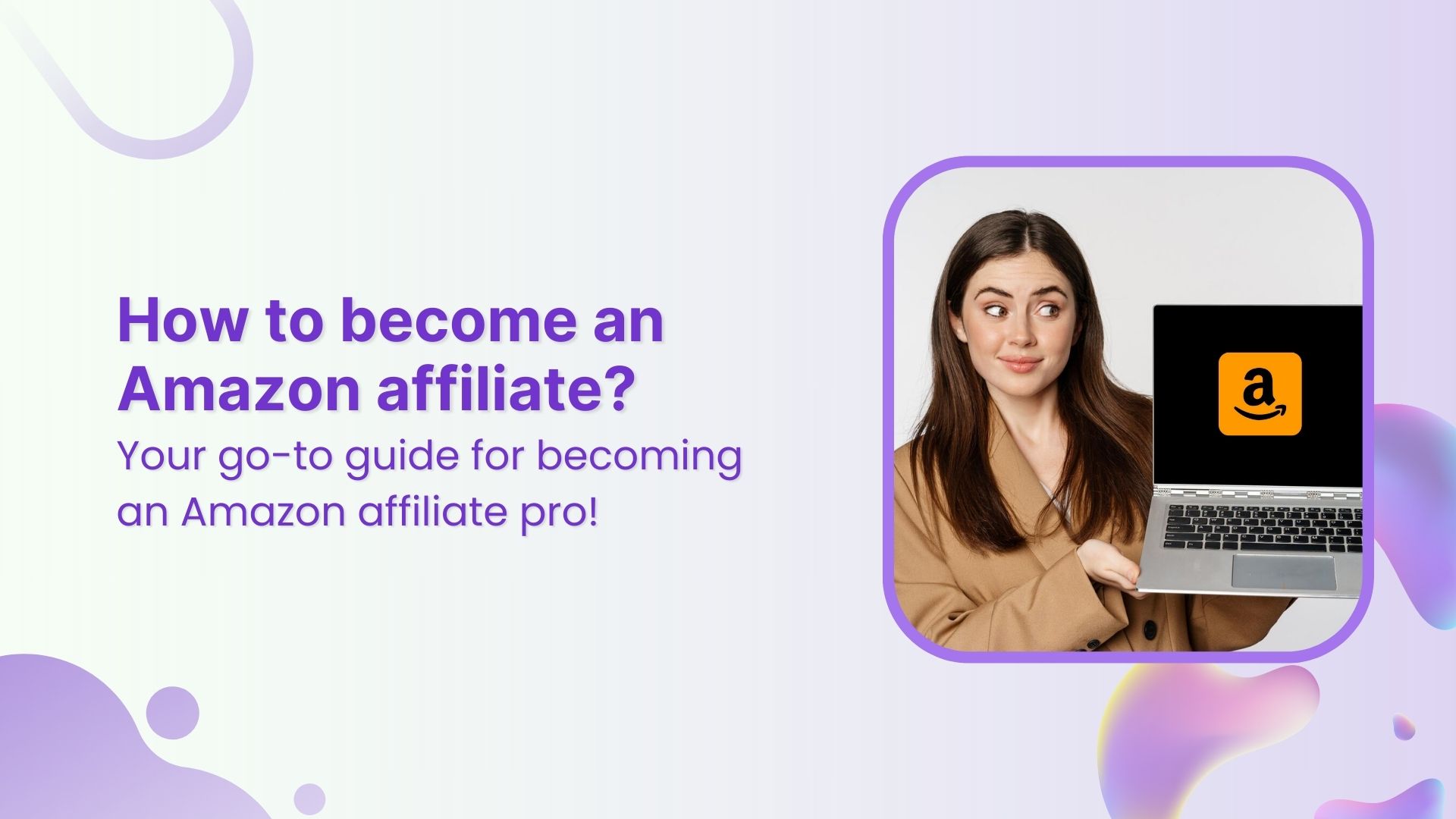Lead generation is the heartbeat that keeps companies alive and thriving. It is a fundamental aspect of marketing that helps businesses identify potential customers and nurture them towards making a purchase. The ultimate goal of lead generation is to create a pipeline of prospects who can be guided through the sales funnel, eventually becoming loyal customers.
This guide will explain what lead generation is, how it works, and explore the best tools available for generating leads.
What is lead generation?
Lead generation is a marketing strategy that many businesses, influencers, and experts use for attracting and converting potential customers into leads by capturing their contact information, typically through offers of valuable content or incentives.
How does lead generation work?
Lead generation serves as the cornerstone of effective marketing strategies, driving businesses to attract and convert potential customers into valuable leads. Here’s a detailed breakdown of the lead generation process:
- Attracting traffic: Businesses leverage a myriad of digital channels including websites, social media platforms, email marketing, and targeted advertising campaigns to drive qualified traffic to their online platforms.
- Offering value: To entice visitors to take action, businesses offer compelling incentives such as free trials, exclusive eBooks, informative webinars, or enticing discounts.
- Capture information: Interested visitors willingly provide their contact information by filling out a form, granting access to the valuable offer or resource.
- Lead nurturing: Once captured, leads undergo a nurturing process through personalized marketing efforts including targeted email campaigns, relevant content, and strategic follow-up communications.
- Conversion: Through effective nurturing, leads progress through the sales funnel, ultimately resulting in conversions where they make a purchase, sign up for a service, or engage in another desired action.
- Measurement & optimization: Throughout the entire process, businesses meticulously track and measure key performance metrics to evaluate the effectiveness of their lead generation initiatives. By leveraging data-driven insights, businesses continuously refine and optimize their strategies to achieve superior results over time.
Link Management Made Easy
Your go to link management tool for CTAs, branded and bio links, QR Codes, tracking and retargeting.
Get Started for FREE!
Types of lead generation
Different types of lead generation tactics are implemented by the experts. However, lead generation has two main categories, such as inbound lead generation and outbound lead generation. These main categories encapsulate multiple lead-generation strategies that we know or use today. Let’s find out:
1. Outbound lead generation
Outbound marketing refers to the engagement where brands directly reach out to prospective customers through various means. Here are multiple outbound lead generation strategies to check out:
Email marketing:
In email marketing, subscribers give marketers or brands permission to reach out to them via email. It allows brands or marketers to communicate with the subscribers to update on the latest developments or offer new products. If you’re leveraging email marketing as part of your lead generation strategy, ensuring that your emails land in the inbox and not in spam is crucial. Using a free mail tester by Maileroo can help you optimize your email deliverability by identifying potential issues before sending out campaigns
Related:
Direct mail:
Direct mailing is yet another way to communicate with the prospects, for instance, sending pamphlets, flyers, and posters to the prospects is an example of direct mailing.
Advertising:
Advertising is a marketing form that has been around for years. Retargeting ads is a cost effective way to remind visitors to revisit your site and complete the purchase.
Cold calling:
Cold calling is an outbound marketing strategy in which brands reach out to customers over the phone. Virtual call centers use this technique to sell products or services.
Did you know?
Only 18% of marketers perceive outbound lead generation to yield valuable leads, highlighting the importance of adopting innovative and strategic approaches to lead generation (source: Bloggingwizard) .
You may also like: Email marketing mistakes to avoid
2. Inbound lead generation
Inbound marketing refers to the engagement where prospective customers find out about the brand through search, content, or social media. Let’s take a look at some of the popular inbound lead generation tactics:
SEO:
Search engine optimization is the basic inbound lead generation strategy that entrepreneurs, brands, and marketers use to bring in the relevant audience to their websites.
Blogging:
Blogging doesn’t only help in SEO, but it also assists brands and marketers in engaging social media users. It’s one of the most powerful ways to generate leads on the market.
Social media:
Social media has turned out to be a useful source of traffic, attention, and conversion. It can also generate inbound leads once the social media content starts to get traction.
Branded Short Links
Create and track branded short links for your business for better conversions.
Brand Your Links Now!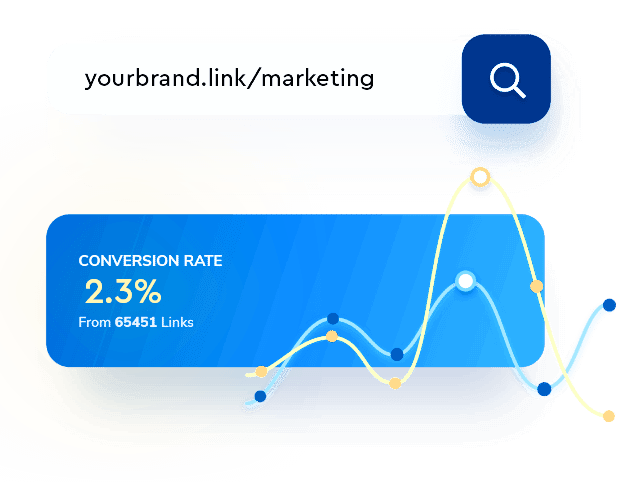
How to generate market qualified leads?
Generating market qualified leads (MQLs) is crucial for driving sales and business growth. Here’s a comprehensive guide on how to effectively generate MQLs:
1. Define your target audience
- Ideal customer profile (ICP): Start by defining your ICP based on demographics, firmographics, behavior, and pain points. Understanding who your ideal customer is helps tailor your marketing efforts to attract the right leads.
- Buyer personas: Develop detailed buyer personas to represent different segments of your target audience. These personas should include information on their job roles, challenges, goals, and decision-making processes.
2. Content marketing
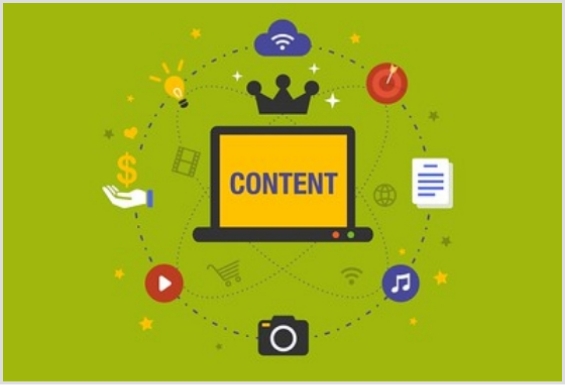
- Educational content: Create valuable and relevant content that addresses the needs and pain points of your target audience. This can include blog posts, eBooks, whitepapers, infographics, and case studies.
- SEO optimization: Ensure your content is optimized for search engines to increase organic traffic. Use relevant keywords, meta descriptions, and high-quality backlinks to improve your search engine rankings. Partnering with a trusted SEO Reseller can also help you efficiently scale your digital marketing efforts and deliver exceptional results for your clients.
- Content distribution: Promote your content through various channels such as social media, email newsletters, and industry forums to reach a wider audience.
3. SEO and SEM
- Search engine optimization (SEO): Optimize your website and content for search engines to attract organic traffic. Focus on on-page SEO (keywords, meta tags, headers) and off-page SEO (backlinks, social signals).
- Search engine marketing (SEM): Use paid search advertising (PPC) to target specific keywords related to your business. Retargeting ads can help you reach potential leads who are actively searching for your products or services.
4. Social media marketing
- Platform selection: Identify which social media platforms your target audience uses the most and focus your efforts there. LinkedIn is particularly effective for B2B lead generation, especially when you know how to use LinkedIn Sales Navigator to generate leads effectively. Facebook and Instagram work well for B2C.
- Engagement: Actively engage with your audience by sharing valuable content, responding to comments, and participating in relevant groups and discussions.
- Paid advertising: Use social media ads to target specific demographics and interests. Platforms like LinkedIn, Facebook, and Twitter offer robust targeting options to reach your ideal audience.
5. Email marketing campaigns
- Segmentation: Segment your email list based on criteria such as industry, job role, and engagement level to deliver personalized and relevant content.
- Lead nurturing: Develop automated email sequences to nurture leads through the sales funnel. Provide educational content, case studies, and product information to move leads closer to a purchase decision.
- A/B testing: Experiment with different URLs, subject lines, content formats, and calls to action (CTAs) to optimize your email campaigns for better performance.
6. Lead magnets
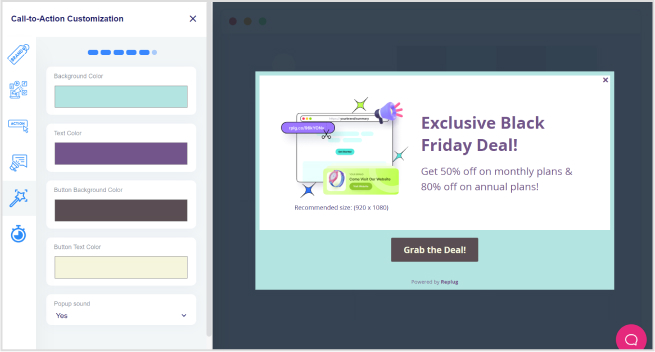
- Offers and incentives: Provide valuable offers such as free trials, demos, webinars, and downloadable resources in exchange for contact information. These lead magnets should address a specific pain point or need of your target audience.
- Landing pages: Create dedicated landing pages for your lead magnets with clear and compelling CTAs. Ensure the landing page is optimized for conversions with a simple form and persuasive copy.
- Exit-intent popups: Use exit-intent popups to capture visitors’ attention just before they leave your site, offering them a compelling reason to stay or subscribe.
7. Lead scoring
- Criteria definition: Establish criteria for scoring leads based on their behavior and engagement with your content. This can include website visits, content downloads, email opens, and social media interactions.
- Automation tools: Use marketing automation tools to track and score leads in real-time. Platforms like ContentStudio, Marketo, and Salesforce can help automate the lead scoring process.
- Qualification thresholds: Define thresholds for when a lead becomes market qualified. This helps your sales team prioritize leads that are most likely to convert.
8. Analytics and refinement
- Performance tracking: Use analytics tools to monitor the performance of your lead generation efforts. Track metrics such as website traffic, conversion rates, lead quality, and ROI.
- Continuous improvement: Regularly analyze your data to identify areas for improvement. A/B test different strategies and make data-driven decisions to optimize your lead generation process.
- Feedback loop: Create a feedback loop between marketing and sales teams to ensure continuous alignment and improvement. Sales teams can provide insights on lead quality and help refine the lead generation process. To support these efforts, using the best AI meeting note taker can ensure that important discussions and action points from internal strategy meetings are automatically captured and shared across departments, improving follow-through and collaboration
9. Leverage social proof
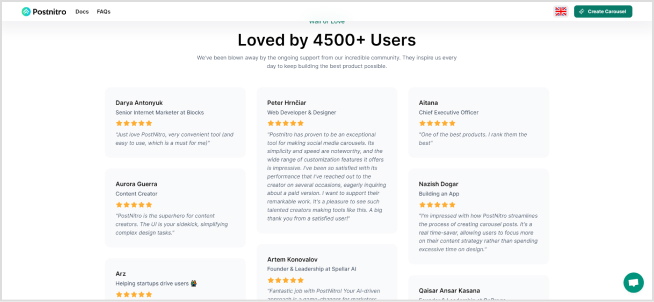
- Testimonials and reviews: Display customer testimonials and reviews prominently on your website and social media profiles.
- Case studies: Share detailed case studies showcasing your product or service’s success in solving customer problems.
10. Utilize interactive content
- Quizzes and surveys: Create engaging quizzes or surveys related to your industry. Require an email address to receive the results.
- Interactive tools: Offer tools like calculators or assessments that provide personalized results in exchange for contact information.
11. Offer exclusive content
- Gated content: Provide high-value content such as ebooks, whitepapers, or research reports behind a sign-up form.
- Webinars and live events: Host live webinars or virtual events on relevant topics and require registration to attend.
12. Referral programs
- Incentivize referrals: Create a referral program that rewards existing customers for referring new leads.
- Partnerships: Form strategic partnerships with complementary businesses to cross-promote and share leads.
13. Retargeting ads
- Ad campaigns: Use retargeting ads to re-engage visitors who have previously interacted with your website but didn’t convert.
- Lookalike audiences: Create lookalike audiences based on your existing leads to target similar potential customers.
14. Leverage video content
- Explainer videos: Create short explainer videos that highlight the benefits of your product or service.
- Live streaming: Use platforms like Facebook Live, Instagram Live, or YouTube Live to engage with your audience in real-time and capture leads.
5 best lead generation tools
Let’s take a look at some of the best lead-generation tools on the market:
1. Replug
Create compelling Call-to-Actions to boost conversions
Improve your click through rate by creating catchy CTAs for your marketing campaigns.
Get Started For Free!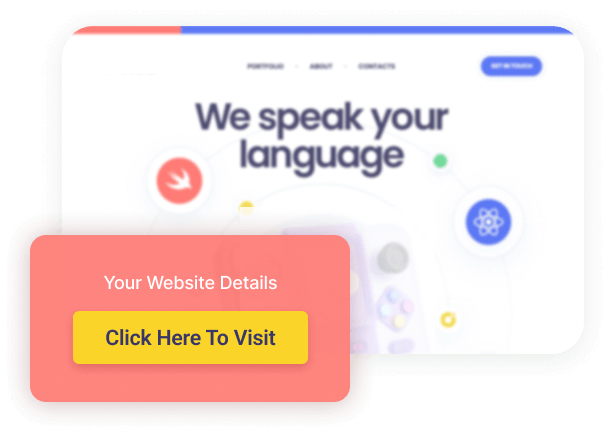
Replug is an excellent link management tool that offers several URL management and tracking services for brands, agencies, influencers, and bloggers. It’s an all-in-one URL management software that helps users shorten the URLs and provides the necessary tools to manage and track them.
Top features of Replug
- Lead generation: Replug lets users create lead generation widgets to target the audience that clicks on the short URLs. It’s a customizable call-to-action widget that pops up when users click on the short links once activated for the campaign.
- Bio links: It allows Replug to create a personalized web page for all links, such as website, blog, social media, etc. The bio link goes into the social media profile link section and helps users showcase multiple links via the Replug bio link option.
- Link rotation: Link rotation is a feature that Replug users can activate if they want to generate leads based on parameters, such as time, date, region, or web browser.
- A/B testing: The A/B testing feature allows Replug users to compare two different-looking links that go to the same destination URL and see which link performs better than the other.
- Personalized CTAs: Users can create personalized CTAs for user engagement. The CTA types available in Replug are forms, buttons, and links.
- Branded URL: Replug has a custom domains feature that lets you create short, branded URLs. It can significantly improve your lead generation campaign.
- While labeling: The white labeling feature allows users to set up a custom domain, theme, and logo instead of Replug branding.
Price: Replug pricing starts at $19 per month
Free trial: Yes (14-day free trial)
2. Usermaven:
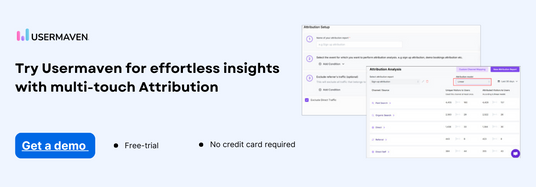
When it comes to lead generation, Usermaven has accurate and comprehensive data on your website visitors and their behaviors. Usermaven is a cutting-edge analytics tool that empowers marketers and product professionals with the insights they need to maximize their lead-generation efforts.
Key features of User:
- Effortless lead tracking: Usermaven’s accurate tracking captures all sources automatically, including organic traffic, inorganic traffic, and UTM sources, ensuring you never miss a potential lead. No more relying on developers or complex setup processes.
- Powerful event tracking: Easily track and analyze critical user events, such as form submissions, button clicks, and scroll depth, to gain a comprehensive understanding of your lead generation funnel’s performance.
- AI-powered insights: Leverage the power of Maven AI, Usermaven’s built-in data assistant, to uncover hidden patterns and opportunities for optimizing your lead generation funnel.
- Comprehensive visitor journey: Understand your prospects’ behavior with detailed user journeys, funnels, and attribution data, allowing you to identify bottlenecks and optimize conversion paths.
- Segmentation made easy: Usermaven’s intuitive segmentation tools enable you to slice and dice your audience data, helping you target specific segments with tailored messaging and offers.
- Privacy-friendly analytics: Usermaven prioritizes user privacy, making it a trustworthy choice for responsible lead-generation practices.
Price:
Usermaven offers flexible pricing plans to cater to businesses of all sizes:
- Pro plan ($14 per month)
- Premium plan ($24/month)
- Enterprise plan (Custom pricing)
3. LeadFeeder
Leadfeeder is a powerful lead generation tool loaded with a bunch of useful tips to generate, manage, and monitor leads and take your digital marketing campaign to the next level. Its seamless integration with other marketing tools makes it a great choice for lead generation.
Key features of LeadFeeder:
- Visitor identification: It’s easier with Leadfeeder to identify anonymous website visitors coming from top companies
- Prospect segmentation: Leadfeeder assists users in prospects’ segmentation. It helps brands in segmentation using behavioral and demographic filters to find leads with the highest potential
- Seamless integration: It flawlessly integrates with several CRM and marketing tools, such as Zoho, Pipedrive, zapier, HubSpot, salesforce, and others
- Automatic lead scoring: One of the key features of Leadfeeder is that it intelligently attributes visitors with a lead score and helps users prioritize the top visitors
- Powerful customer insights: It also offers in-depth tracking and analysis that lets marketers and brands track the performance of the lead generation campaign.
Price: The paid plan costs €99 per month
Free trial: It offers a free plan (with no limits)
4. Reply.io
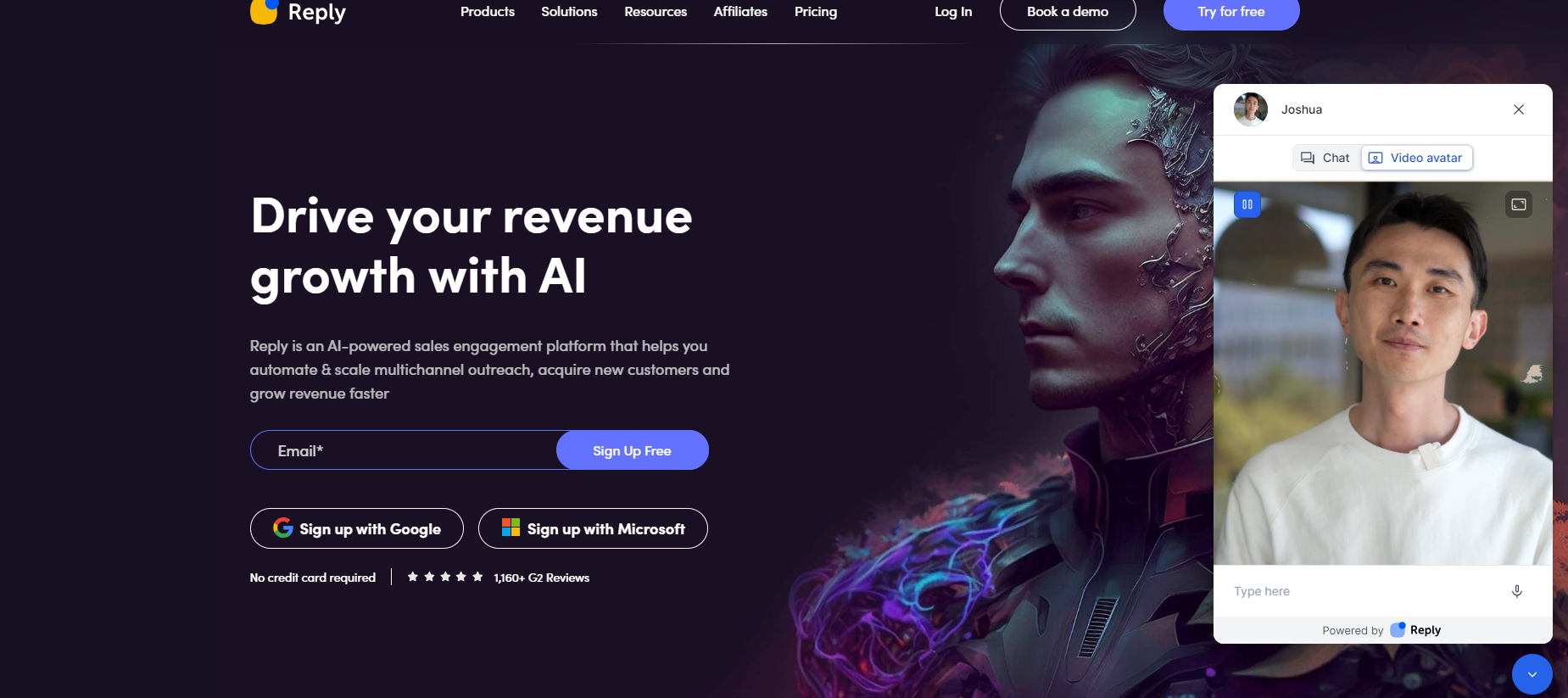
Reply is an excellent lead generation tool with an AI-powered sales engagement platform that transforms and scales the prospect outreach campaign. It’s an effective channel to acquire new customers and grow revenue faster than ever.
Key features of Reply:
- Outreach data sourcing: Discover the most relevant leads through a powerful AI-based outreach toolkit
- Automated multichannel sequence: Create an automated, multichannel communication sequence that increases the chance of engagement and conversion
- Social media integration: It seamlessly connects with social media platforms and makes lead generation even better through the power of social media marketing
- Email and sequences templates: Unleash the effectiveness of existing email and sequence templates available to the users
- AI-based sales assistant: It has an AI-based assistant that automates your emails and responses and increases the chances of getting attention from the receiver.
Price: The paid plans start at $49 per month
Free trial: It offers a free plan (with limited features)
5. Meet Alfred
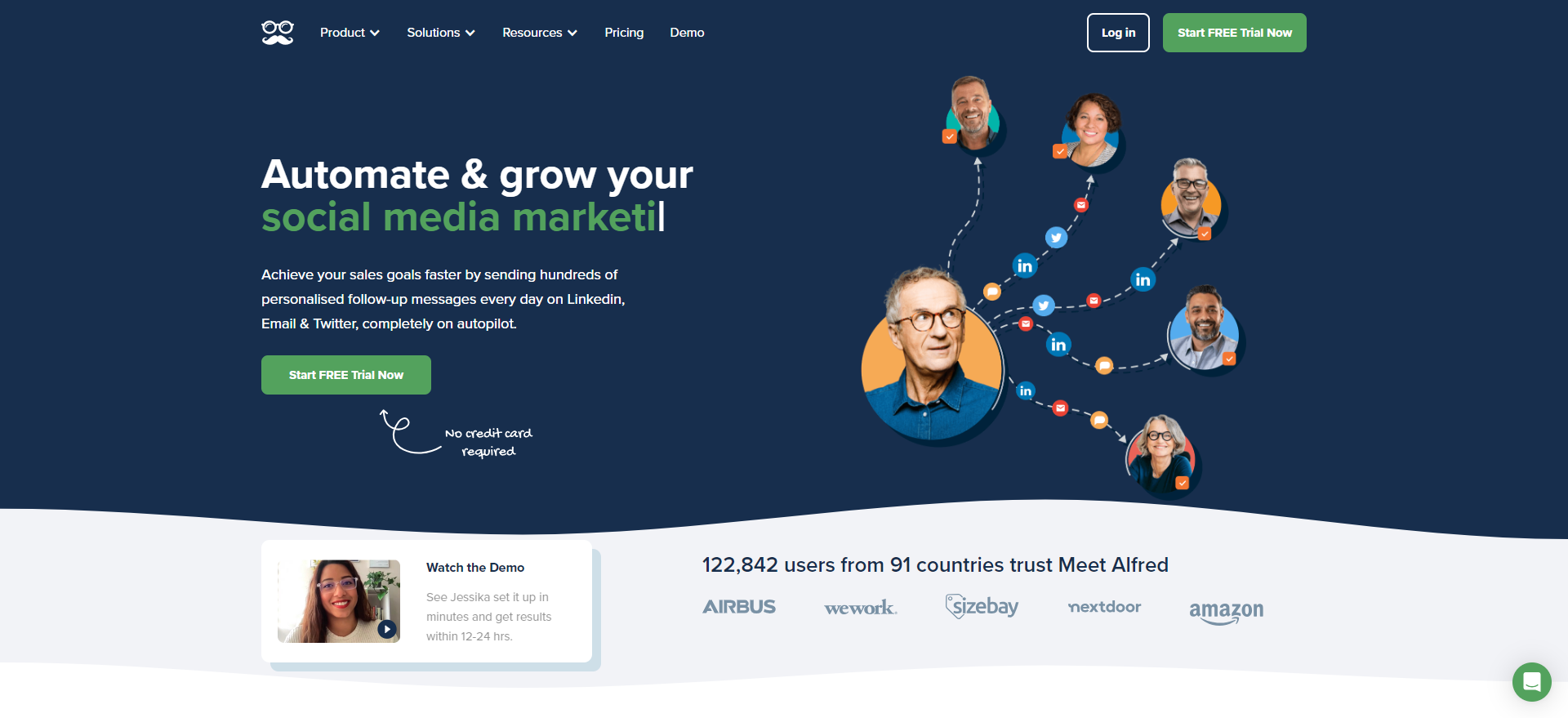
Meet Alfred is a fantastic lead-generation tool for marketers, brands, and agencies. It allows users to create and send completely automated messages on LinkedIn, Twitter, and email. It’s a tool that takes your lead generation to the next level
Key features of Meet Alfred:
- Multichannel connectivity: It’s an efficient tool that helps brands and marketers send out messages with ease. Instead, it allows marketers to send out automated messages across different platforms, such as Twitter, LinkedIn, and email
- Personalized messaging: It doesn’t only automate messaging across different platforms, but it also enables marketers and brands to send out personalized messages to the leads. It massively improves the effectiveness of the message
- Improve efficiency: Automation makes it easier to send messages, follow up on the leads, and increase overall efficiency. This is why such features make all the difference
- Impressive integration: It integrates with over 3,000 apps and platforms, which is mind-boggling.
Price: It starts at $39 per month
Free Trial: The free trial is available
6. LeadIQ
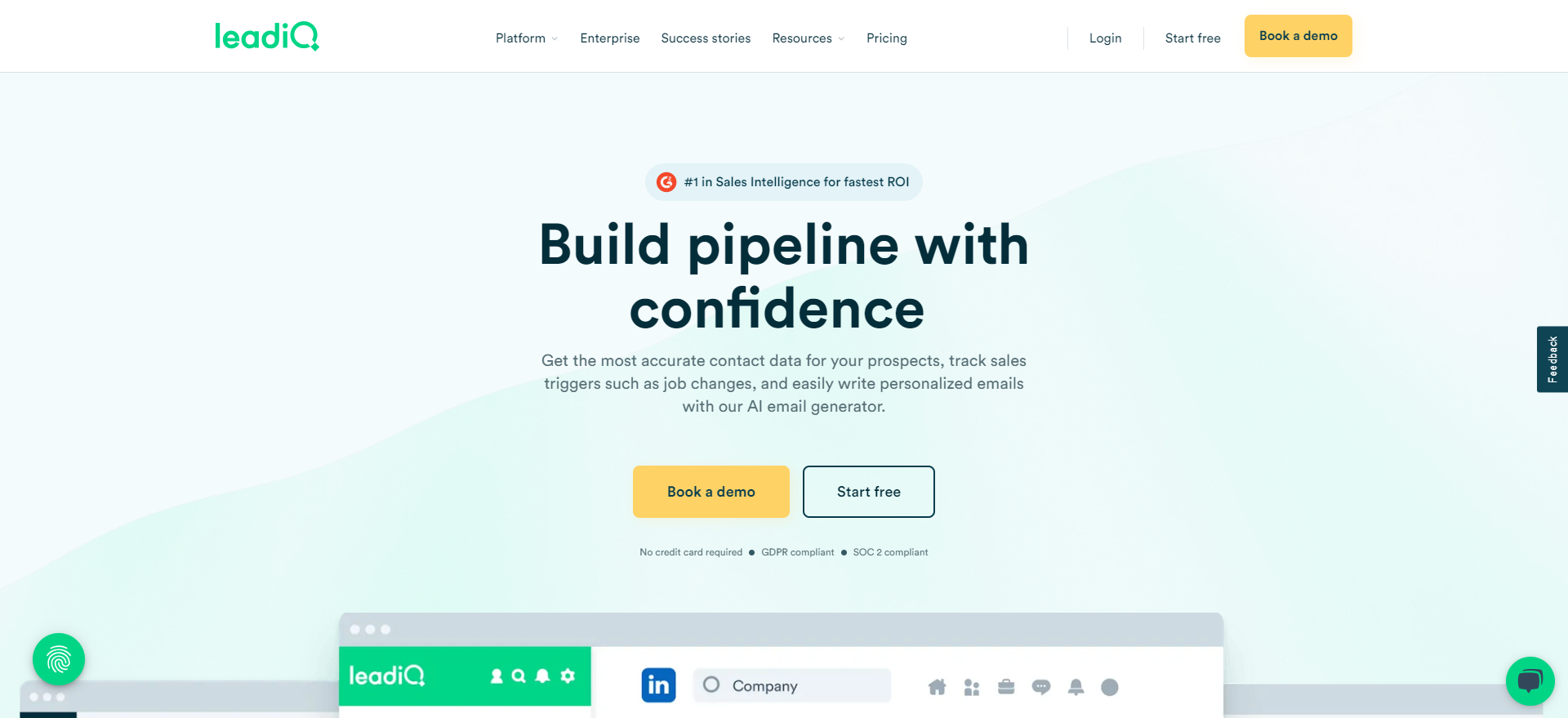
LeadIQ is a smart B2B lead generation tool that tracks accurate prospect data, creates personalized email messages, and tracks campaign performance effectively. It’s astonishingly good at connecting with the right audience, making it easier to engage and convert.
Key features of LeadIQ:
- Huge verified contacts database: It lets you find verified contacts with its smart database technology and helps connect with prospects faster than ever
- AI-powered email writing: Use the power of AI to write effective, high-quality emails to your prospects and existing clients
- Personalized messaging: Make the email messages more authentic and trustworthy by adding personalization to them
- Robust integration: Integrate with the industry’s leading marketing tools and softwares and take the luxury of this tool to the next level
Price: The paid plans start at $39 per month
Free Trial: LeadIQ has a free plan
FAQs about lead generation
The three best approaches to lead generation are content marketing, search engine optimization, and social media marketing.
The most common lead generation technique is driving visitors to a landing page through SEO and converting them into paying customers or subscribers (lead).
Several activities will not help any lead generation campaign, such as social media marketing with no planning, a vague content marketing strategy, targeting the wrong audience through ads, and trying to sell to everyone.
It looks like this: Awareness > Findability > Reputation > Conversion > Advocacy
Once the lead is generated, it’s usually nurtured in the funnel until it’s ready to make a purchase decision. Nurturing involves educating this segment and preparing them to take their game to the next stage.
The four steps of the lead generation process are: aware, convert, close, and delight.



























